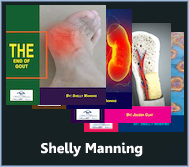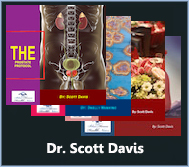 My bones today are stronger than ever before. Let me tell you how this came about.
My bones today are stronger than ever before. Let me tell you how this came about.
Click to see more detail on Video
What is a good bone density level?
Bone density is typically measured using a diagnostic test called a bone mineral density (BMD) test, which calculates the amount of mineral in your bones, such as calcium. The results of a BMD test are usually reported as a T-score and a Z-score.
- T-score: This score compares your bone density with that of a healthy young adult of the same sex. A T-score of -1 and above is considered normal bone density. A T-score between -1 and -2.5 indicates low bone density (osteopenia), and a T-score of -2.5 or lower indicates osteoporosis.
- Z-score: This score compares your bone density with that of other people of the same age, sex, and size. A Z-score within the normal range typically indicates that your bone density is within the expected range for your age group.
In summary, a T-score of -1 and above is generally considered normal bone density. However, it’s essential to interpret BMD test results in conjunction with other factors, such as your overall health, risk factors for osteoporosis (such as family history, age, sex, and lifestyle factors), and the presence of any other medical conditions that may affect bone health.
If you have concerns about your bone density or risk of osteoporosis, it’s important to discuss them with a healthcare professional. They can recommend appropriate screening tests, lifestyle modifications, and treatments to help maintain or improve bone health.
How do you read bone density results?
Bone density results are typically reported using two main scores: T-score and Z-score. Here’s how to interpret them:
- T-score:
- A T-score compares your bone density with that of a healthy young adult of the same sex.
- A T-score of -1 and above is considered normal bone density.
- A T-score between -1 and -2.5 indicates low bone density (osteopenia).
- A T-score of -2.5 or lower indicates osteoporosis.
For example:
- T-score between -1 and -2.5: Mildly decreased bone density
- T-score between -2.5 and -3.0: Moderately decreased bone density
- T-score below -3.0: Severely decreased bone density
- Z-score:
- A Z-score compares your bone density with that of other people of the same age, sex, and size.
- A Z-score within the normal range typically indicates that your bone density is within the expected range for your age group.
For example:
- Z-score within normal range: Bone density similar to others in your age group
- Z-score significantly below normal: Bone density lower than expected for your age group
It’s important to note that T-scores are used primarily for diagnosing osteoporosis in postmenopausal women and men aged 50 and older. Z-scores are more commonly used in premenopausal women, men under age 50, and children to assess bone density in the context of age-matched peers.
Interpreting bone density results should be done in consultation with a healthcare professional, who can take into account your medical history, risk factors for osteoporosis, and other factors that may affect bone health. They can help you understand what the results mean for your overall bone health and recommend appropriate lifestyle changes or treatments if necessary.
What should my bone density percentage be?
Bone density is typically measured using a diagnostic test called a bone mineral density (BMD) test, which calculates the amount of mineral, such as calcium, in your bones. The results of a BMD test are usually reported in terms of bone density measurements, such as grams per square centimeter (g/cm²) or as a percentage of young adult mean (YAM).
The percentage of young adult mean (YAM) is often used to interpret bone density results. It compares your bone density with that of a healthy young adult of the same sex. A bone density percentage above 100% indicates bone density higher than the average young adult, while a percentage below 100% indicates lower bone density.
However, it’s essential to note that there isn’t a specific target bone density percentage that applies to everyone. The interpretation of bone density results depends on various factors, including your age, sex, ethnicity, and individual risk factors for osteoporosis. Additionally, different testing machines and facilities may use slightly different reference ranges.
Instead of focusing solely on a specific bone density percentage, it’s more important to interpret the results in the context of your overall bone health and risk factors for osteoporosis. Your healthcare provider can help you understand what the results mean for you and recommend appropriate lifestyle changes or treatments if necessary.
What is the fastest way to increase bone density?
Increasing bone density is a gradual process that typically requires a combination of lifestyle modifications and treatments. While there’s no instant or “fast” way to increase bone density, the following strategies can help improve bone health over time:
- Regular weight-bearing exercise: Engage in weight-bearing exercises such as walking, jogging, dancing, stair climbing, or strength training. These activities help stimulate bone growth and increase bone density.
- Strength training: Incorporate resistance training exercises, such as lifting weights or using resistance bands, to build muscle strength and stimulate bone growth.
- Adequate calcium intake: Ensure you’re getting enough calcium in your diet through sources such as dairy products, leafy greens, almonds, and fortified foods or supplements if needed. Calcium is essential for building and maintaining strong bones.
- Sufficient vitamin D: Vitamin D helps the body absorb calcium and plays a crucial role in bone health. Get adequate sun exposure, consume vitamin D-rich foods such as fatty fish, egg yolks, and fortified foods, and consider taking a vitamin D supplement if necessary.
- Healthy diet: Eat a balanced diet rich in fruits, vegetables, whole grains, lean proteins, and healthy fats to provide essential nutrients for bone health.
- Limit alcohol and caffeine: Excessive alcohol consumption and high caffeine intake can interfere with calcium absorption and may negatively affect bone health. Limit alcohol intake to moderate levels and reduce caffeine consumption if necessary.
- Quit smoking: Smoking can weaken bones and increase the risk of osteoporosis. If you smoke, quit smoking to improve bone health and overall health.
- Bone-strengthening medications: In some cases, healthcare providers may prescribe medications, such as bisphosphonates, hormone therapy, or other osteoporosis medications, to help increase bone density and reduce the risk of fractures.
- Regular bone density monitoring: If you have concerns about bone health or are at risk for osteoporosis, talk to your healthcare provider about bone density testing and monitoring. Regular monitoring can help track changes in bone density over time and guide treatment decisions.
- Fall prevention: Take steps to prevent falls and reduce the risk of fractures, such as removing tripping hazards from your home, installing handrails and grab bars, wearing appropriate footwear, and practicing balance exercises.
While these strategies can help improve bone health and increase bone density, it’s essential to consult with a healthcare provider before making significant changes to your lifestyle or starting any new exercise regimen or medication. They can provide personalized advice based on your individual health status and risk factors for osteoporosis.
Click to see more detail on Video
 My bones today are stronger than ever before. Let me tell you how this came about.
My bones today are stronger than ever before. Let me tell you how this came about.
Click to see more detail on Video





